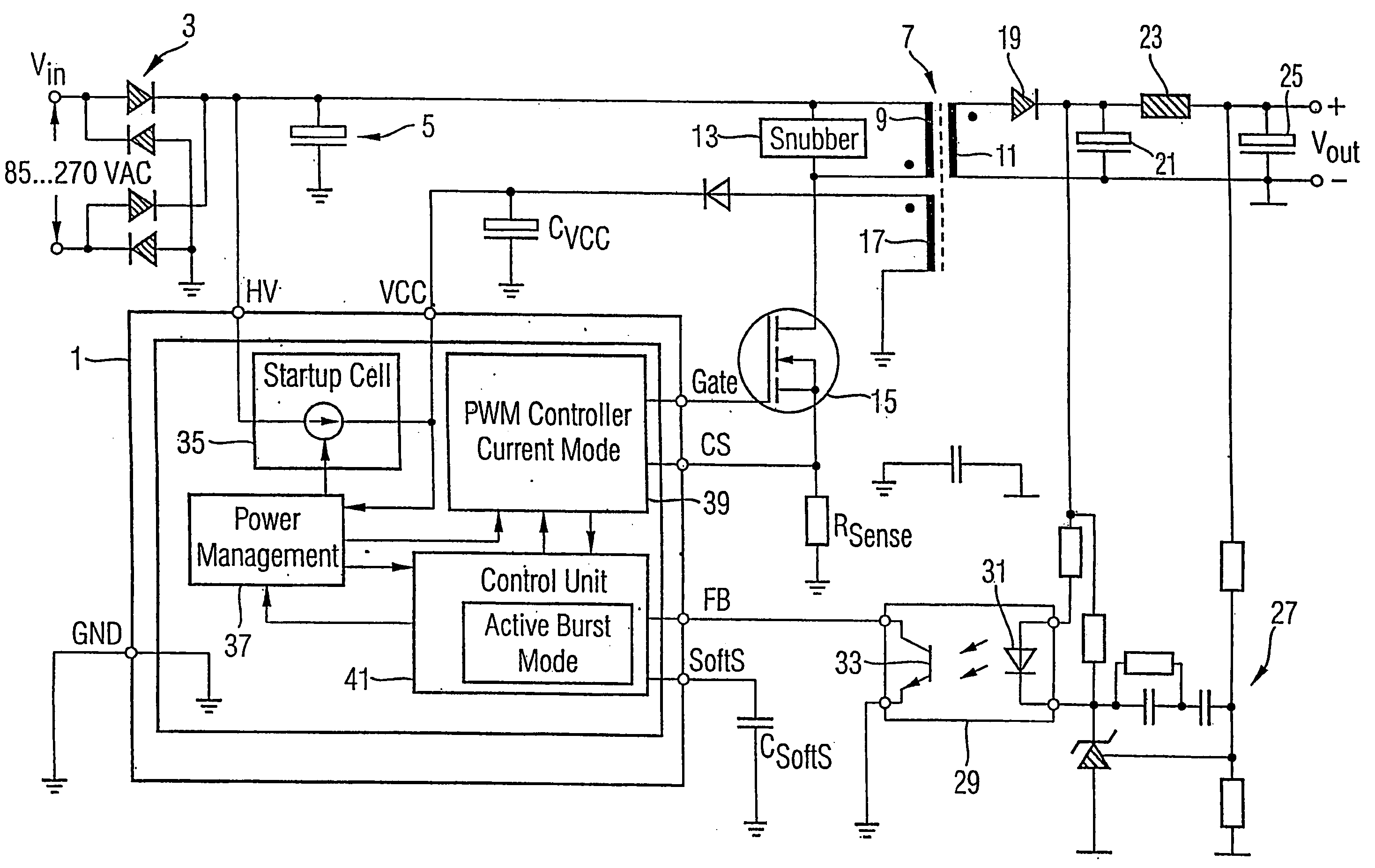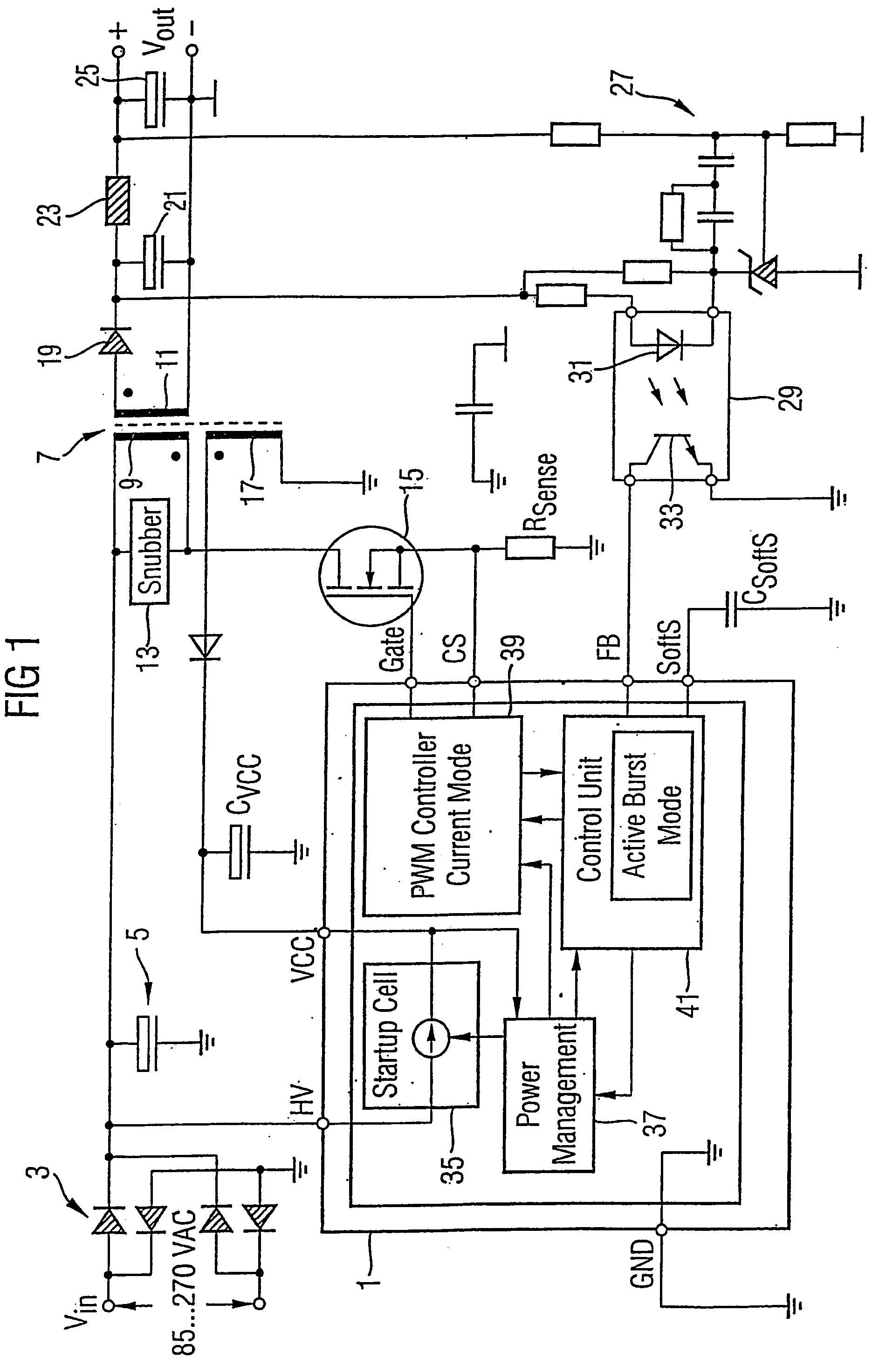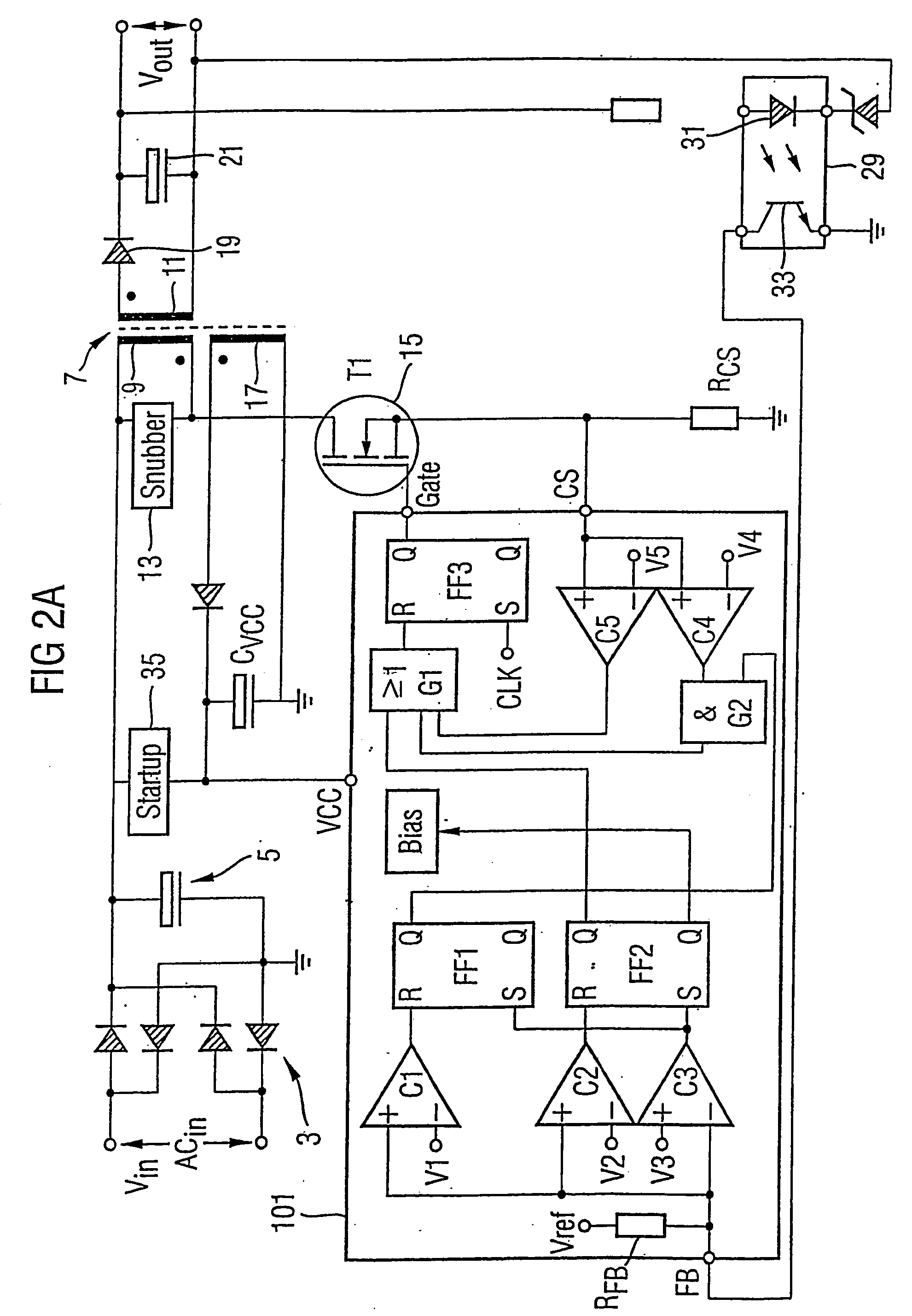Switching mode power supplies
a power supply and switching mode technology, applied in the direction of electric variable regulation, process and machine control, instruments, etc., can solve the problems of low switching operation frequency, low switching loss, and huge reduction of smps efficiency, so as to remove high frequency bursting
- Summary
- Abstract
- Description
- Claims
- Application Information
AI Technical Summary
Benefits of technology
Problems solved by technology
Method used
Image
Examples
first embodiment
[0026]FIG. 1 shows schematically a power converter which is the invention. An AC voltage supply Vin is received at the left of the figure. Typically Vin is in the range 85 to 270V. It is rectified by a rectifier 3, and then passed to a smoothing capacitor 5. The DC voltage thus generated is fed to one input of a transformer 7 having a primary winding 9 and a secondary winding 11. A snubber 13 is connected between the two inputs of the primary winding 9, and the other common connection of the snubber 13 and primary winding 9 is connected to an input of a transistor 15. The gate of the transistor 15 is controlled by an output called “Gate” of a control system 1. The other side of the transistor 15 is connected to ground via a resistor Rsense. The voltage at one side of the resistor Rsense is an input CS to the control system 1. The control system 1 further receives an input HV from the rectifier 3 for powering the unit 1. When in standby mode, the input HV serves as a current source t...
second embodiment
[0038]FIG. 2 (a) illustrates an embodiment in which the feedback signal is directly related to the power drawn by the load. FIG. 2 (b) shows an alternate implementation of the invention of FIG. 2 (a) in which the feedback signal is inversely related to the power drawn by the load. If the power consumption at Vout is decreasing, VFB (the feedback voltage) is increasing, and visa versa. Therefore, the relationship between the threshold voltages V1a, V2a and V3a is the inverse of the thresholds V1, V2 and V3 of the implementation of FIG. 2 (a) where the feedback signal is directly related to the power drawn by the load. The relationship is V3a>V2a>V1a. This same implementation method can be applied to circuits of FIGS. 6 and 7 described below. The signal curve for VFB is the inverse of those shown in FIGS. 3, 5 and 8 below. In the implementation of FIG. 2 (b), RFB (the feedback resistance) is acting as a pull-down resistor that can also be replaced by an active current sink.
[0039] The ...
PUM
 Login to View More
Login to View More Abstract
Description
Claims
Application Information
 Login to View More
Login to View More - R&D
- Intellectual Property
- Life Sciences
- Materials
- Tech Scout
- Unparalleled Data Quality
- Higher Quality Content
- 60% Fewer Hallucinations
Browse by: Latest US Patents, China's latest patents, Technical Efficacy Thesaurus, Application Domain, Technology Topic, Popular Technical Reports.
© 2025 PatSnap. All rights reserved.Legal|Privacy policy|Modern Slavery Act Transparency Statement|Sitemap|About US| Contact US: help@patsnap.com



